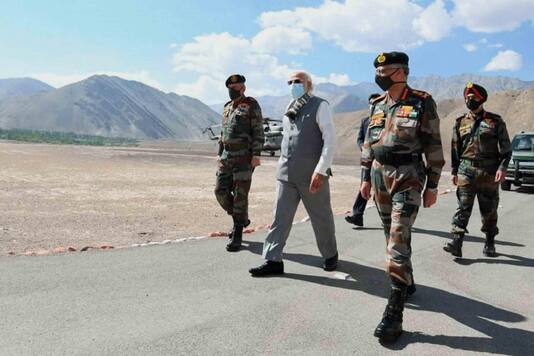
Table of Contents
SOURCE: Lt Gen (Retd) DS Hooda / INDIA TODAY
Today, India faces its most serious military challenge on our northern borders since the Wangdung incident of 1986. Although the violence that accompanied the initial transgressions has not reoccurred and the current focus is on dialogue, it is apparent that the People’s Liberation Army (PLA) has occupied territory across India’s perception of the Line of Actual Control (LAC). Attempts to use terms like ‘grey zone’ and obfuscate the matter by making distinctions between ‘incursion’, ‘transgression’, and ‘occupation’ cannot hide this reality.
It is now apparent that neither India nor China is looking for a military escalation, and we are in for an extended period of heavy deployment on both sides. The PLA would be happy with the existing status quo in which the LAC has shifted westward in partial conformity with their claims. The Indian Army is readying to keep additional troops in Ladakh during the winter, although it is doubtful whether this alone will force a retreat of the PLA.
Irrespective of how the current crisis plays out, there are some larger issues that the political and military leadership must now address. These have to do with how we approach our national security challenges. I am listing three key topics, two for the political and one for the military leaders.
DEFINING A NATIONAL SECURITY STRATEGY
For a country with the fifth-largest economy and the third-largest military spending in the world, we are inexplicably coy about articulating a national security strategy (NSS). A well-defined national strategy is a clear vision of the path that India must take in pursuit of its national vision. It also provides a guide for all organs of the state on the policy directions that they must follow.
The most critical part of the NSS is the statement of national objectives and core interests. These are redlines for a country that are non-negotiable and convey a clear message to the adversaries. If these redlines are breached, then the use of military power becomes inevitable. Territorial integrity is at the heart of any nation’s core interest, and that is at stake in Ladakh. We could argue that the barren and uninhabited areas of Ladakh are not worth a conflict, but the Chinese apparently do not subscribe to this view and are willing to risk conflict for their territorial claims in the same desolate area.
A NSS also outlines a consistent path and prevents ad hocism in policymaking. It commits the political leadership to a specific approach and forces the building of capabilities to meet the desired objectives. Instead of mere platitudes to win social media approbation, there is a functional action plan.
UNDERSTANDING THE POLITICAL-MILITARY INTERFACE
In India, there has been considerable resistance to the military’s participation in decisions taken at the national level, and this has resulted in the military preparing its strategies without political guidance. Due to a lack of understanding of military strategy, the political leadership has also adopted a hands-off approach towards the military and failed to define clear political objectives.
The military is the main instrument of national power, and its role is to convert the political objective into reality. Carl von Clausewitz wrote, “The political object—the original motive for the war—will determine both the military objective to be reached and the amount of effort it requires.” Thus, it is extremely important that the political aim is clearly spelled out to the military.
A close interaction between the political and military leadership is essential not only during a crisis but also during periods of peace. It is in peacetime that strategic assessments are made, contingencies analysed, and capabilities built up. Unfortunately, the current state of civil-military relations, characterized by Anit Mukherjee as ‘The Absent Dialogue’, has resulted in incoherence in our strategic planning and a reduction in military effectiveness. Some results of this are evident in how we have responded to the current crisis in Eastern Ladakh.
MILITARY REFORM AND PROFESSIONAL ADVICE
Although the Indian military has long recognised China as the primary threat, the political leadership has been excessively focused on Pakistan, which has prevented a serious look at the type of capabilities and organisational structures required for deterring China from exercising the military option. This is in sharp contrast to the very comprehensive reforms undertaken by the PLA in the last five years that have improved military effectiveness.
The leadership of the three services must now shed their parochial attitudes and get serious about the transformation of the military into a joint warfighting machine. India’s geography confers it with some advantages that can be exploited by the Indian Army, Navy, and Air Force, and a synchronized approach would multiply these advantages. We must also look at capabilities to neutralize the PLA’s current dominance in missile technology, space, cyber, and electronic warfare. It is equally important to revise our military doctrine to handle a range of contingencies from coercion to a limited conflict to an all-out war.
Finally, military advice to the political leadership must be entirely professional and honest. The military has a “can do” spirit, but that must not stop its leadership from pointing out the dangers of under-resourcing the military while expecting ambitious results. We have seen the disastrous consequences of this in the American war in Iraq and Afghanistan. It is well understood that the political leadership has many competing requirements, particularly in the time of a stressed economy, but military leaders must clearly communicate capability shortfalls and avoid making exaggerated claims.






